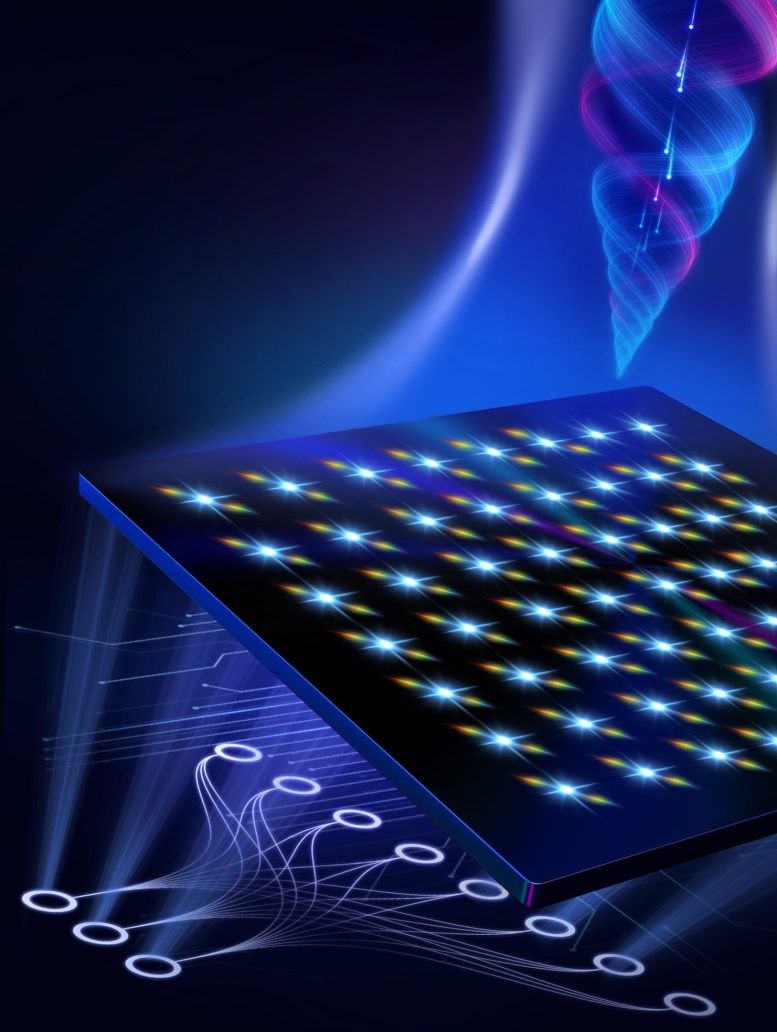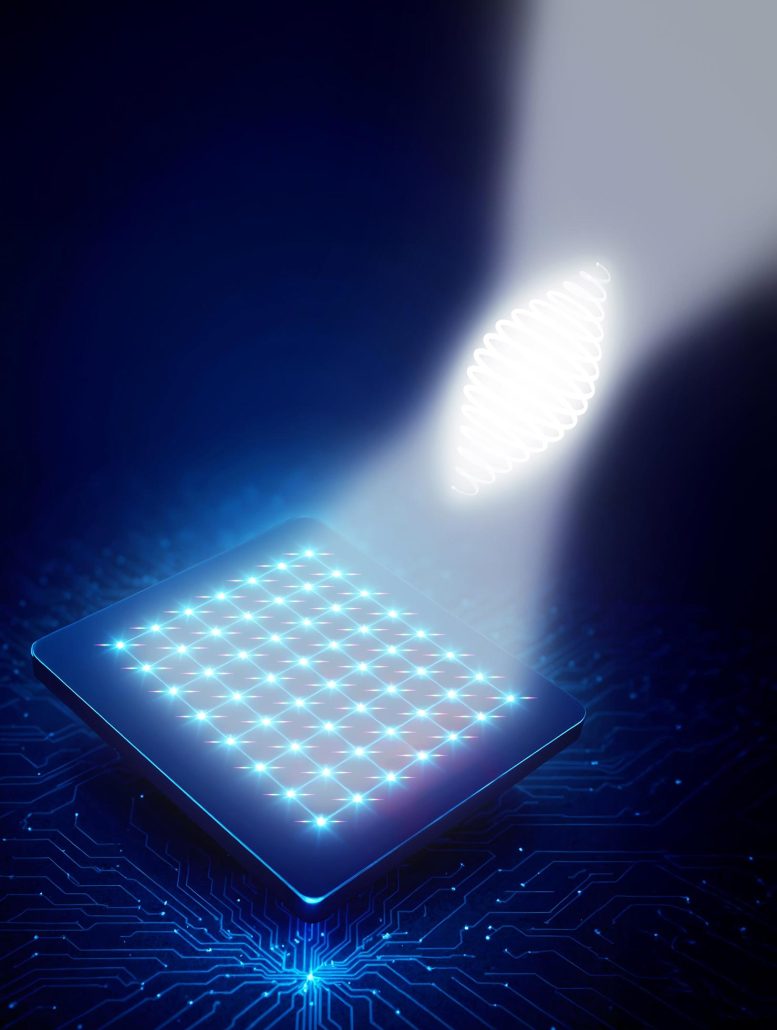
Scientists can now snap ultra-powerful laser pulses in one shot. RAVEN reveals distortions instantly, unlocking breakthroughs in energy, acceleration, and physics.
- Researchers at the <span class="glossaryLink" aria-describedby="tt" data-cmtooltip="
University of OxfordThe University of Oxford is the oldest university in the English-speaking world and one of the most prestigious institutions globally. It has a distinguished record in scientific innovation, from early astronomical observations to modern vaccine development. Oxford is a leader in quantum computing, AI ethics, and biomedical research, with dozens of cutting-edge departments and institutes. Its global collaborations include CERN, WHO, and the UN.
” data-gt-translate-attributes=”[{"attribute":"data-cmtooltip", "format":"html"}]” tabindex=”0″ role=”link”>University of Oxford have developed a groundbreaking way to capture the complete structure of ultra-powerful laser pulses using a single measurement.
- Created in collaboration with Ludwig-Maximilian University of Munich and the Max Planck Institute for Quantum Optics, the new method offers an unprecedented look at how intense light interacts with matter.
- This breakthrough opens the door to major advances in areas like fusion energy and experimental physics, where controlling extreme light is key.
- The discovery was published on June 26 in <span class="glossaryLink" aria-describedby="tt" data-cmtooltip="
Nature Photonics<em>Nature Photonics</em> is a prestigious, peer-reviewed scientific journal that is published by the Nature Publishing Group. Launched in January 2007, the journal focuses on the field of photonics, which includes research into the science and technology of light generation, manipulation, and detection. Its content ranges from fundamental research to applied science, covering topics such as lasers, optical devices, photonics materials, and photonics for energy. In addition to research papers, <em>Nature Photonics</em> also publishes reviews, news, and commentary on significant developments in the photonics field. It is a highly respected publication and is widely read by researchers, academics, and professionals in the photonics and related fields.
” data-gt-translate-attributes=”[{"attribute":"data-cmtooltip", "format":"html"}]” tabindex=”0″ role=”link”>Nature Photonics
.
The Challenge of Capturing Extreme Light
Ultra-intense lasers can hurl electrons to almost light speed in a single wave cycle, making them indispensable for exploring the most extreme corners of physics. Yet their rapid flickers and intricate structure have long defied real-time measurement. Traditional methods needed hundreds of shots to stitch together a single snapshot, leaving scientists with only a blurred sense of these fleeting pulses.
A team from the University of Oxford and Ludwig-Maximilian University of Munich has now cracked the problem with an inventive tool called RAVEN—short for Real-time Acquisition of Vectorial Electromagnetic Near-fields. With just one shot, RAVEN records the complete shape, timing, and alignment of an ultra-intense laser pulse at remarkable precision.

Why It Matters: Real-Time Laser Control and Modeling
Here’s how it works. The laser beam is split in two. One half reveals how the color of the pulse shifts over time, while the other half passes through a special crystal that separates different polarizations. A grid of microscopic lenses captures the pulse’s wavefront, and a custom optical sensor preserves everything in a single image. Software then reconstructs the full 3D structure of the pulse.
By delivering an instant, full-fidelity picture, RAVEN lets researchers fine-tune lasers on the fly, close the gap between experiments and simulations, and open fresh pathways in areas such as particle acceleration, <span class="glossaryLink" aria-describedby="tt" data-cmtooltip="
” data-gt-translate-attributes=”[{"attribute":"data-cmtooltip", "format":"html"}]” tabindex=”0″ role=”link”>plasma physics, and next-generation fusion energy.
First-Time Full Capture: A New Era in Laser Diagnostics
Lead researcher Sunny Howard (PhD researcher in the Department of Physics, University of Oxford and vis iting scientist to Ludwig-Maximilian University of Munich) said: “Our approach enables, for the first time, the complete capture of an ultra-intense laser pulse in real-time, including its polarization state and complex internal structure. This not only provides unprecedented insights into laser-matter interactions but also paves the way for optimizing high-power laser systems in a way that was previously impossible.”
The technique was successfully tested on the ATLAS-3000 petawatt-class laser in Germany, where it revealed small distortions and wave shifts in the laser pulse that were previously impossible to measure in real-time, allowing the research team to fine-tune the instrument. These distortions, known as spatio-temporal couplings, can significantly affect the performance of high-intensity laser experiments.

Real-Time Feedback for High-Energy Experiments
By providing real-time feedback, RAVEN allows for immediate adjustments, improving the <span class="glossaryLink" aria-describedby="tt" data-cmtooltip="
” data-gt-translate-attributes=”[{"attribute":"data-cmtooltip", "format":"html"}]” tabindex=”0″ role=”link”>accuracy and efficiency of experiments in plasma physics, particle acceleration, and high-energy density science. It also results in significant time savings, since multiple shots are not required to fully characterise the laser pulse’s properties.
The technique also provides a potential new route to realize inertial fusion energy devices in the laboratory – a key gateway step towards generating fusion energy at a scale sufficient to power societies. Inertial fusion energy devices use ultra-intense laser pulses to generate highly energetic particles within a plasma, which then propagate into the fusion fuel. This ‘auxiliary heating’ concept requires accurate knowledge of the focused laser pulse intensity to target to optimize the fusion yield, one now provided by RAVEN. Focused lasers could also provide a powerful probe for new physics, for instance, generating photon-photon scattering in a vacuum by directing two pulses at each other.
Game-Changing Efficiency and Laser Insight
Co-author Professor Peter Norreys (Department of Physics, University of Oxford), says: “Where most existing methods would require hundreds of shots, RAVEN achieves a complete spatio-temporal characterization of a laser pulse in just one. This not only provides a powerful new tool for laser diagnostics but also has the potential to accelerate progress across a wide range of ultra-intense laser applications, promising to push the boundaries of laser science and technology.”
Fundamental Simplicity Behind the Breakthrough
Co-author Dr. Andreas Döpp (Faculty of Physics, Ludwig-Maximilians-University Munich and visiting scientist to Atomic and Laser Physics, University of Oxford) adds: “Shortly after Sunny joined us in Munich for a year it finally ‘clicked’ and we realized the beautiful result underpinning RAVEN: that because ultra-intense pulses are confined to such a tiny space and time when focused, there are fundamental limits on how much resolution is actually needed to perform this type of diagnostic. This was a game changer, and meant we could use micro lenses, making our setup much simpler.”
Looking Ahead: Scaling RAVEN’s Impact
Looking ahead, the researchers hope to expand the use of RAVEN to a broader range of laser facilities and explore its potential in optimising inertial fusion energy research, laser-driven particle accelerators and high-field quantum electrodynamics experiments.
Reference: “Single-shot spatiotemporal vector field measurements of petawatt laser pulses” by Sunny Howard, Jannik Esslinger, Nils Weiße, Jakob Schröder, Christoph Eberle, Robin H. W. Wang, Stefan Karsch, Peter Norreys and Andreas Döpp, 26 June 2025, Nature Photonics.
DOI: 10.1038/s41566-025-01698-x
This study was conducted in collaboration with Ludwig-Maximilian University of Munich, the Max Planck Institute for Quantum Optics, and the John Adams Institute for Accelerator Science. The work was supported by the UKRI-STFC and funding bodies in Germany and the European Union.
Never miss a breakthrough: Join the SciTechDaily newsletter.
